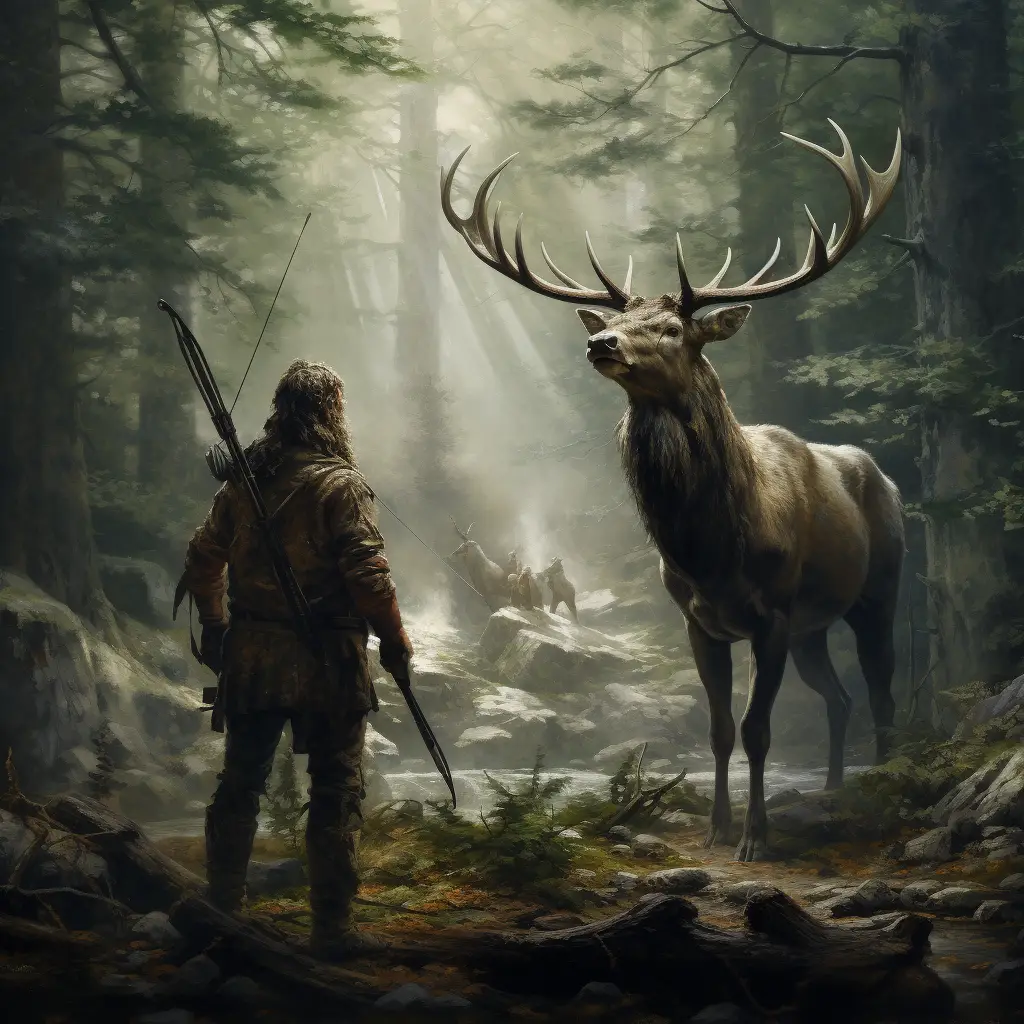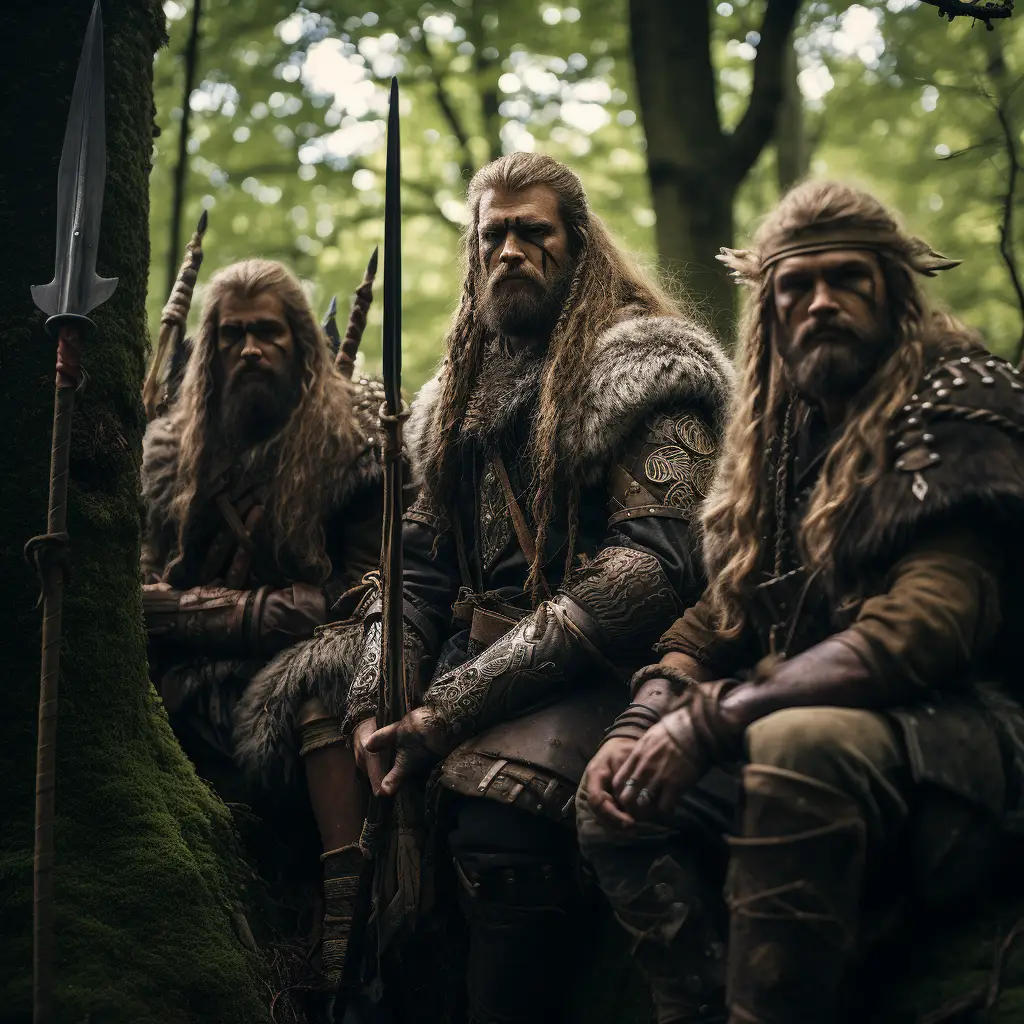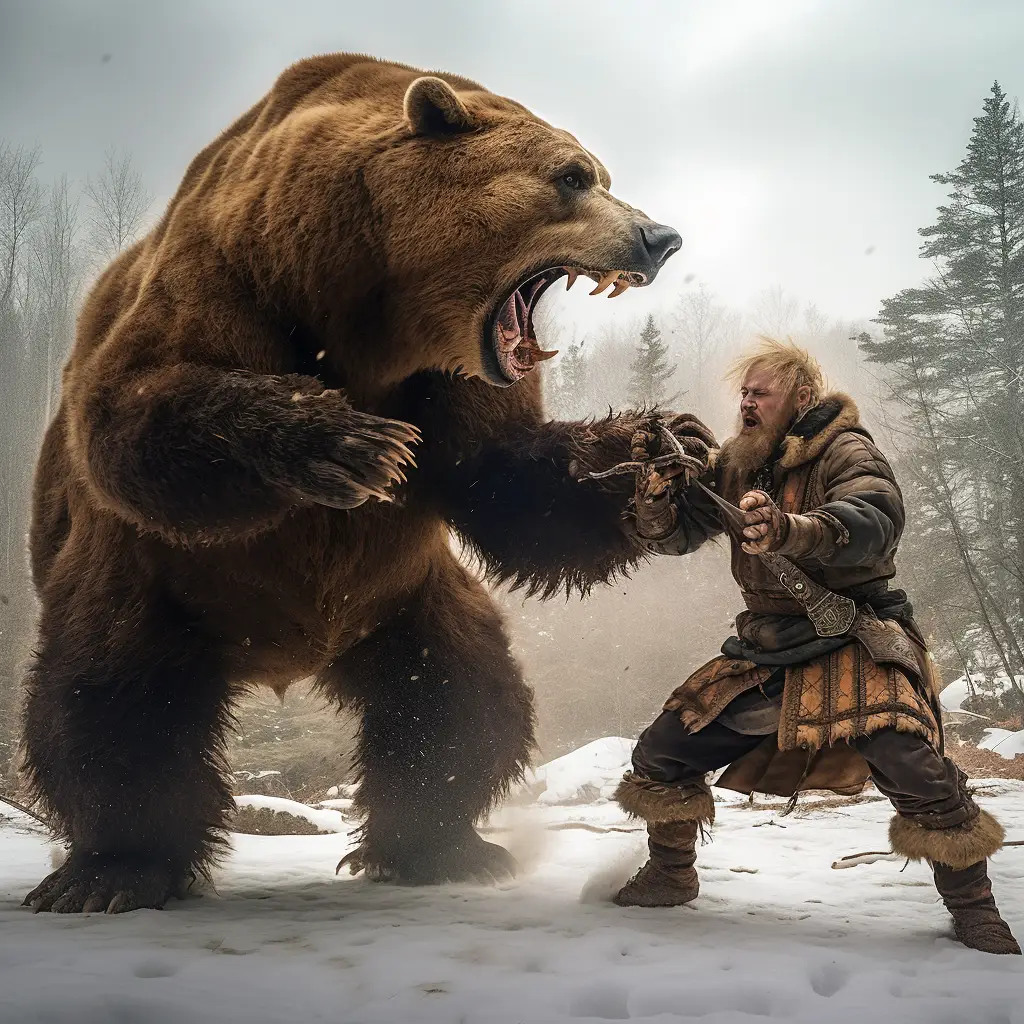Viking hunting was an essential activity for the Norse people, providing them with food, materials, and even cultural significance.
Game Animals: Vikings hunted a variety of game animals, including deer, elk, boar, bear, wolves, and smaller animals like rabbits and birds. The specific animals targeted often depended on the region and the available wildlife.
Hunting Techniques: Vikings used various hunting techniques, such as bows and arrows, spears, and traps. The choice of technique depended on the type of game being hunted and the environment in which the hunting took place.
Falconry: Some Vikings, particularly those of higher social status, engaged in falconry. Falcons and other birds of prey were trained for hunting smaller animals. Falconry was not only a practical hunting method but also a form of entertainment and a status symbol.
Hunting Dogs: Dogs played a crucial role in Viking hunting. They were trained for tracking, flushing out game, and retrieving. Large, powerful dogs were particularly useful in hunting larger prey.
Boar Hunting: Boar hunting was a popular and challenging pursuit among the Vikings. Boars were dangerous animals, and hunting them required skill and bravery. Boar hunting also held cultural significance, and boar imagery appears in Norse mythology.
Whale Hunting: In coastal regions, some Viking communities engaged in whale hunting. Whales provided valuable resources, including meat, blubber, and bones. Whaling expeditions required specialized equipment and larger vessels.
Hunting for Pelts: The Vikings hunted animals not only for their meat but also for their hides and furs. Animal pelts were used for clothing, blankets, and other practical purposes.
Seasonal Hunting: Hunting activities were often seasonal, with different times of the year being more suitable for hunting specific game. The winter months, in particular, provided opportunities for tracking animals in the snow.
Ritual and Symbolism: Hunting had cultural and symbolic significance for the Vikings. It was not only a means of survival but also tied to religious practices and beliefs. The successful hunt was often celebrated with rituals and feasting.
Social and Economic Aspects: Hunting was not solely an individual pursuit. It was often a communal activity, with groups of hunters working together to take down larger game. The spoils of the hunt contributed to the local economy through trade and consumption.
Imagine in modern day having the basic weapons that Vikings had to hunt for their food!



